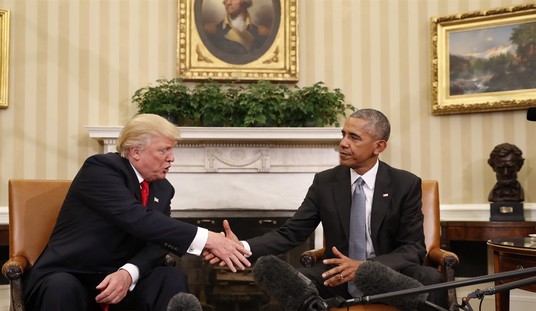The new round of negotiations between Israel and the Palestinians launched last week, accompanied by a White House dinner with President Obama, Hilary Clinton, Tony Blair, and other dignitaries, has brought about renewed, albeit restrained hopes that progress on the peace process might now be made. But such optimism, highlighted by an extremely ambitious (and many would say naïve) deadline for the conclusion of a peace deal, cannot obscure the fact that the hurdles blocking the path to a resolution of the conflict are still considerable.
The split in the Palestinian national movement, with Hamas controlling Gaza and Fatah controlling the West Bank, is certainly one of the biggest obstacles and the extent to which all sides have stuck their heads in the sand on this issue is quite astonishing. The idea that a deal can be negotiated and agreed upon whilst the Palestinian body-politic is split in half is simply illogical and any agreement reached in this manner will not be worth the paper it is signed on.
The most discussed obstacle at the moment, however, is that of Israeli settlements. Construction within the West Bank settlements has been frozen for the past ten months, a move designed to bring the Palestinians to the negotiating table. The Palestinian side nevertheless insisted on further preconditions for direct talks and now that the freeze is about to expire, the Palestinian negotiators are threatening to pull out of the new talks.
Notwithstanding the immediate concerns over the potential for renewed construction within the settlements and the breakdown of the talks, the size of the settlement problem can be seen to be somewhat overstated, even if the numbers seem rather daunting. There are approximately 290,000 Israelis living in 120 settlements scattered throughout the West Bank and another 185,000 living in the Jewish neighborhoods of east Jerusalem.
Looking at the West Bank settlements, from even a cursory glance at their placement it can be seen that the majority of the settlers in the territory live close enough to the Green Line for a territorial exchange to be feasible. In total, approximately 189,000 of the 290,000 West Bank settlers live in roughly 27 settlements located 10km or less from the pre-1967 border (including, however, the 17,000 residents of Ariel which lies about 17km from the Green Line but is unlikely to be removed due to its size).
The principle of land swaps between Israel and the putative Palestinian state has already been established and although Palestinian negotiators have not thus far been willing to consider land transfers of much more than four percent of the total area of the West Bank, it remains possible that in order to move the process forward, larger land swaps might be contemplated to include a greater number of settlers. These land swaps would also include all the Jewish east Jerusalem neighborhoods which, because of their size, will almost certainly remain within Israel.
This still leaves open the not-inconsiderable question of the 100,000-odd settlers who live in approximately 90 widely scattered settlements in the West Bank, some of which lie deep within the territory in areas which would be impossible to annex into Israel. Moreover, the people living in these communities comprise a much more ideological sector of Israeli society and the settler movement, people who are deeply wedded to the idea that the establishment of the state of Israel in 1948 and the capture in 1967 of Judea and Samaria (otherwise known as the West Bank), the heartland of the ancient Jewish state, represents the beginning of the Messianic redemption of the Jewish people from their centuries-long exile. For them, settlement of all parts of Eretz Yisrael, the Land of Israel, is a religious injunction and relinquishing the land would represent a huge blow to this belief.
There has been little discussion in Israel about the stark reality that if ever an agreement were reached many of these settlements would likely have to be evacuated. The evacuation of 8,000 settlers from the 21 settlements in the Gaza Strip in August 2005 was an event of immense upheaval in Israel and was bitterly opposed by the settler movement. Evacuating ten times the population that lived in the 21 Israeli communities in Gaza from more than four times as many settlements in the West Bank would be an undertaking of much larger and more complicated proportions involving unprecedented opposition, and violence, from significant sections of the settler movement and the Israeli right.
Of course, deliberation on these difficulties is based on a large and disturbing premise that is made more or less subconsciously by almost everyone who thinks about the issue of peace in the Middle East: that there is no way the settlers could ever remain within the cities and towns that they have established as citizens or residents of the new Palestinian state. Such a notion would generally be dismissed out of hand as laughable since it is (rightly) presumed that the security of those who remained would be virtually non-existent and the viability of their continued presence in their communities practically nil.
To all intents and purposes (and despite a couple of half-hearted claims to the contrary) the Palestinians will simply not tolerate any Jewish presence within their state, a profoundly racist and intolerant attitude. By contrast, twenty percent of Israel’s population is Arab and the Arab-Israeli citizens, whilst encountering a degree of discrimination within Israeli society, nevertheless take full part in it and work as doctors and lawyers, serve on the Supreme Court, are elected to the Knesset, and serve in the government.
The reality of this situation tells us something more. The intolerance prevalent within Palestinian society indicates that, on the whole, the Palestinian body-politic has still not accepted the historic Jewish connection to the land nor the legitimacy of a sovereign Jewish state on it or part of it; they have merely resigned themselves to the fact, at least for the time being. Such an attitude does not augur well for the viability and future stability of any peace deal that might be agreed upon in these circumstances. The headlong rush towards the establishment of a Palestinian state which the international community is pursuing, seeks to sideline this reality with the expectation that everything will just work out for the best.
The panacea of an Israel-Palestinian settlement for the worlds’ ills is a notion which has been so widely propagated as to make it practically heretical to suggest slowing down the process until a situation exists in which Jewish residents of a Palestinian state could be as safe and secure, and enjoy similar rights, as do the Arab citizens of Israel. That this is the case suggests an awful capitulation to the forces of hatred and intolerance, so rampant in the region already, on the part of those international actors who should instead be promoting such values, not allowing them to fester and metastasize.









Join the conversation as a VIP Member